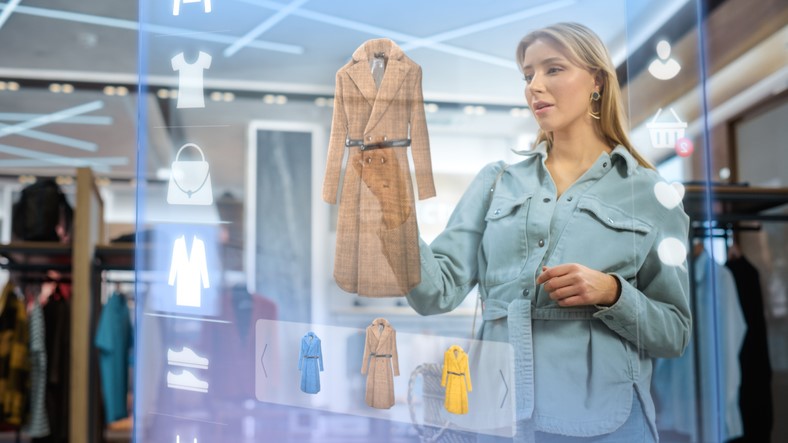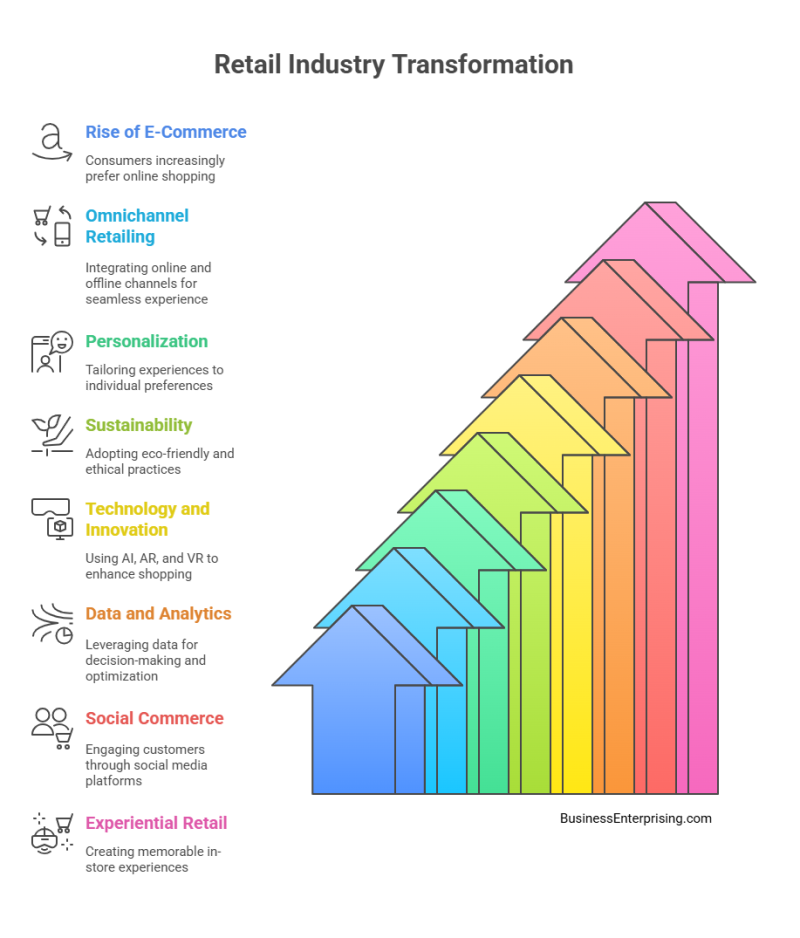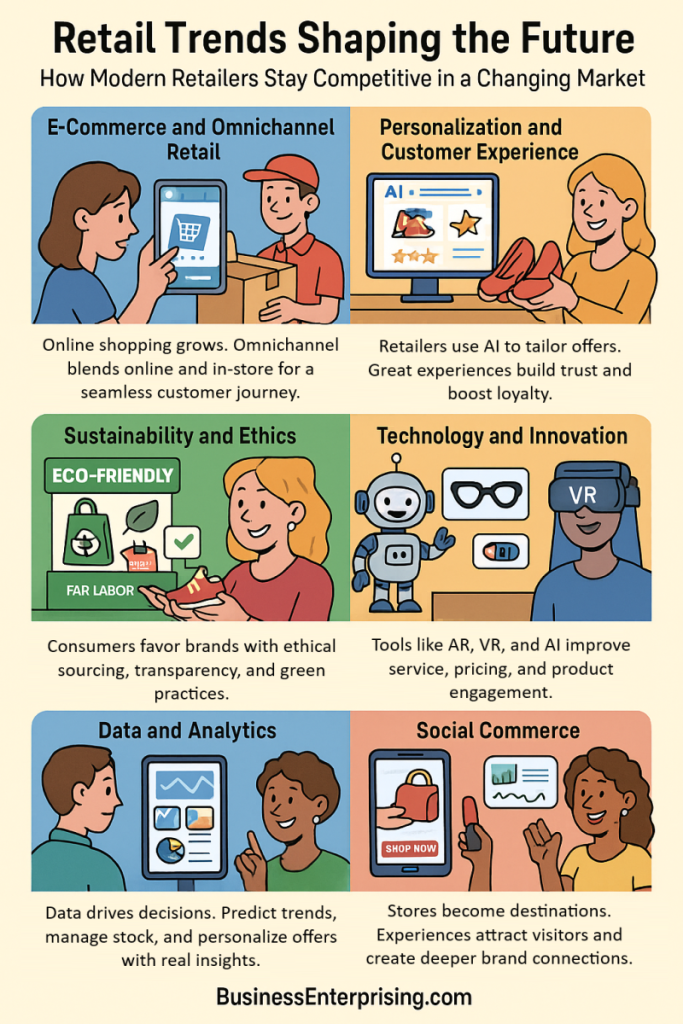
The Rise of E-Commerce and Omnichannel Retailing
Firstly, the rise of e-commerce has fundamentally altered the retail sector. Consumers increasingly prefer the convenience and accessibility of online shopping, leading to a surge in e-commerce sales. According to recent data, global e-commerce sales are projected to reach $4.9 trillion by the end of 2021. Consequently, retailers must invest in robust e-commerce platforms to capture this growing market segment.
However, the shift towards online shopping does not signal the end of physical stores. Instead, omnichannel retailing is emerging as a critical strategy. By integrating online and offline channels, retailers can provide a seamless shopping experience that caters to consumers’ diverse preferences. For instance, services such as click-and-collect, where customers buy online and pick up in-store, blend the convenience of e-commerce with the immediacy of physical shopping. Moreover, omnichannel strategies enable retailers to gather comprehensive customer data, enhancing their ability to deliver personalized experiences.
Personalization and Customer Experience
Speaking of personalization, it is one of the most impactful trends in retail. Today’s consumers expect tailored experiences that align with their individual preferences and needs. Retailers leveraging data analytics and artificial intelligence (AI) can gain deeper insights into customer behavior, enabling them to deliver highly personalized recommendations and offers.
Furthermore, enhancing the overall customer experience is essential. From user-friendly website interfaces to responsive customer service, every touchpoint matters. Retailers that prioritize customer experience tend to build stronger relationships with their clientele, fostering loyalty and driving repeat business. For example, brands like Amazon and Netflix excel in personalization, using sophisticated algorithms to suggest products and content based on past behaviors and preferences.
Sustainability and Ethical Practices
Moreover, sustainability and ethical practices are becoming increasingly important in the retail industry. Consumers, especially younger demographics, are more conscious of the environmental and social impact of their purchases. As a result, they are gravitating towards brands that demonstrate a commitment to sustainability and ethical sourcing.
Retailers can respond to this trend by adopting eco-friendly practices, such as using sustainable materials, reducing waste, and ensuring fair labor conditions throughout their supply chains. Transparency is also key; brands that openly share their sustainability initiatives tend to earn greater trust and loyalty from consumers. Companies like Patagonia and Everlane are prime examples, having built their reputations on ethical practices and sustainability.
Technology and Innovation
Technology continues to be a driving force in retail transformation. From AI and machine learning to augmented reality (AR) and virtual reality (VR), innovative technologies are reshaping the shopping experience.
AI and machine learning, for instance, are being used to enhance inventory management, optimize pricing strategies, and improve customer service through chatbots. Meanwhile, AR and VR technologies allow customers to visualize products in their own environments or try on items virtually. For example, IKEA’s AR app lets customers see how furniture will look in their homes before making a purchase, significantly enhancing the shopping experience.
The Importance of Data and Analytics
In addition to technology, the strategic use of data and analytics is crucial for modern retailers. Data-driven decision-making enables retailers to understand market trends, predict consumer behavior, and optimize operations. By leveraging big data, retailers can gain valuable insights into sales patterns, customer preferences, and inventory levels.
Predictive analytics, in particular, helps retailers anticipate demand, manage stock more effectively, and create targeted marketing campaigns. For instance, Walmart uses big data analytics to optimize its supply chain, ensuring products are available when and where customers need them. Consequently, data and analytics play a pivotal role in enhancing efficiency and driving growth.
Social Commerce
Furthermore, social commerce is emerging as a powerful trend. With the rise of social media platforms like Instagram, Facebook, and TikTok, consumers are increasingly discovering and purchasing products directly through these channels. Social commerce leverages the influence of social media to drive sales, offering a unique blend of social engagement and shopping convenience.
Retailers can capitalize on this trend by integrating social commerce strategies into their marketing efforts. This includes using shoppable posts, collaborating with influencers, and creating engaging content that encourages social sharing and interaction. For example, brands like Glossier and Gymshark have successfully built strong communities on social media, driving significant sales through social commerce.
The Shift Towards Experiential Retail
Lastly, experiential retail is gaining traction as retailers seek to create memorable and engaging in-store experiences. This trend emphasizes the importance of creating a unique and immersive shopping environment that goes beyond mere transactions. By offering interactive displays, events, and personalized services, retailers can attract customers and differentiate themselves from competitors.
For example, Apple stores are renowned for their experiential retail approach, offering hands-on product demonstrations, workshops, and a sleek, inviting atmosphere. Similarly, brands like Nike and Lululemon host fitness classes and events in their stores, fostering a sense of community and enhancing brand loyalty.
Conclusion
In conclusion, the retail industry is undergoing significant changes, driven by evolving consumer behaviors, technological advancements, and a heightened focus on sustainability. To navigate this dynamic landscape, retailers must stay attuned to current trends and adapt their strategies accordingly. By embracing e-commerce and omnichannel retailing, prioritizing personalization and customer experience, adopting sustainable practices, leveraging technology, utilizing data and analytics, integrating social commerce, and focusing on experiential retail, businesses can position themselves for sustained success in the competitive retail market. As the industry continues to evolve, staying ahead of current retail trends will be key to thriving in the future of e-commerce.


